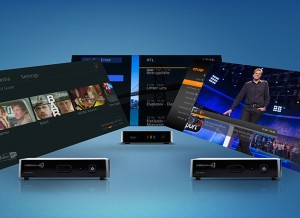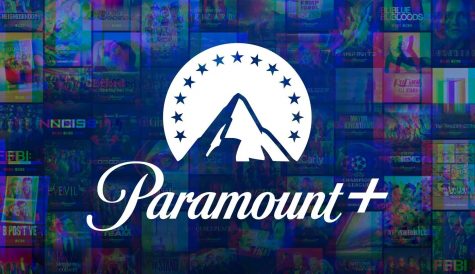
After more than 40 years of operation, DTVE is closing its doors and our website will no longer be updated daily. Thank you for all of your support.
ABOX42 highlights advanced set-tops
Germany-based set-top provider ABOX42 is using TV Connect to highlight the latest generation M40 Smart STB platform for IPTV, OTT and hybrid deployments. This latest model of the M-series product range supports HEVC/H.265 compression and is based on the latest chipset technology from Broadcom, supporting up to 4K video resolution.
ABOX42 is also showcasing the latest version of OPX TV, its TV application and backend solution, now available for IPTV, OTT and hybrid DVB projects. OPX TV offers a variety of new features and functionalities, such as full HbbTV support, IP based or DVB based EPG and capability to run both IPTV, OTT and traditional DVB channels in a unified channel list.
For content security, ABOX42 has added Expressplay, the DRM solution from Intertrust/Marlin to its portfolio of DRM and software-based conditional access systems, which enables operators to run different security systems for different applications or services side by side on the ABOX42 platform.
The company says its ABOX42 Smart Platform and customised IPTV, OTT and hybrid smart set-top boxes, which it says can solve the most important key challenges facing TV operators by providing a combination of solid hardware foundation and software features to deliver what it describes as a unique TV proposition with least cost and effort.
“Modern smart STBs like the ABOX42 M-series are designed for local TV applications as well as for emerging cloud based TV services,” said ABOX42 founder and CEO Matthias Greve. “Since on one hand the operators need to control the user experience, and on the other hand need to be ahead of competition with the introduction of new TV features, it is and will remain mandatory to have a modern, flexible and scalable STB platform for the first screen TV experience of paying users. Smart TVs offer a certain range of OTT applications, but will not replace the main set-top box device in end-users home, which provide a unified TV experience on the first and second screen.”
According to Greve, advanced set-tops like the the ABOX42 M-series are designed for local TV applications as well as for emerging cloud based TV services. Greve also said he believes that the set-top will not be supplanted by the smart TV. New generation set-tops are becoming software-centric, a trend he likened to the shift from feature phones to smartphones. “The same trend we see in the TV middleware segment, where operators want to move from closed propriety systems to open solutions based on modern internet technologies and open standards,” he said.
Greve said that set-tops would remain central to pay TV and that there are a number of challenges that only advanced set-tops can overcome.
“The biggest challenge for operators today is to understand what the differences of new IPTV, OTT and hybrid-DVB solutions are and how they can in the most effective way get to their target solution in the least time,” he said. “Basically cable and satellite pay TV operators want to deliver new services like network PVR, network timeshift and restart TV, VoD and OTT delivery of specific channels to free up bandwidth in their traditional DVB networks. IPTV operators who started several years ago need to upgrade their user experiences from inflexible first and second-generation STB platforms to the latest – third – generation. These new generation platforms allow the fast development of modern user interfaces, compelling services and the integration of third-party services based on HTML5.”
Greve said demand for smart set-tops would be driven by operators switching from legacy IPTV platforms to new IPTV and OTT solutions that can offer additional OTT services, HbbTV, NPVR, network-based timeshift, restart TV, smart TV applications and multiscreen delivery.
“The new smart STBs will be able to handle many different standards side by side, such as streaming protocols, DRM and CAS systems. This new smart STB generation is HTML5 browser-based and much easier for development. A new focus will be the management of the software lifecycle and cloud services to manage the smart STB during the entire lifecycle, like we are all used to nowadays with for example the iPhone,” he said.
Greve said that operators are currently interested in deploying network DVR services along with HbbTV services and multiscreen distribution. He also said that operators would look to retail devices to service second and third screens in the home.
“Looking into hardware devices, already today lots of retail devices – iOS or Android-based – can be enabled as a second screen device, where the operator controls the application for these devices for OTT services. For the main screen – for example IPTV – the operator will also control and provide the hardware device – the STB.”
Greve said that ABOX42 is now delivering products that support all major DVB features in both IPTV and OTT, HbbTV services, other OTT services and third-party applications with different streaming formats, different DRM systems side by side on the platform.
He said that the company’s smart SDK and mobile toolkit provided a broad compatibility to OTT services, streaming formats, DRM systems as well as the support of various middleware solutions.



